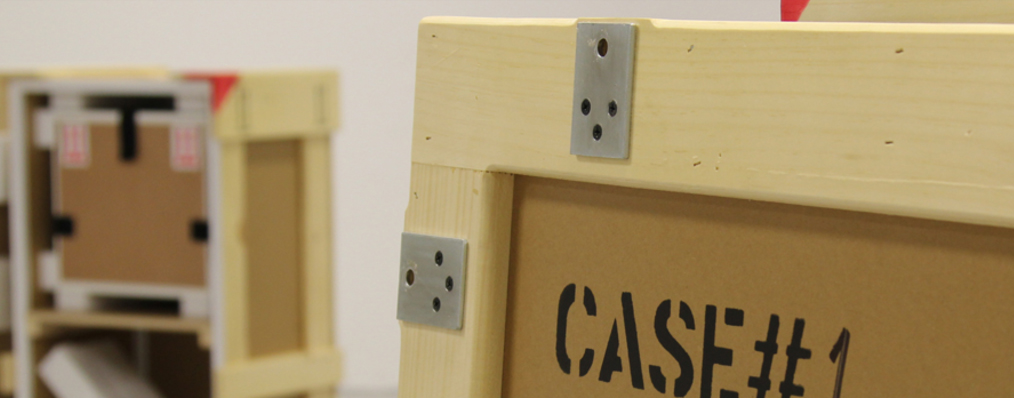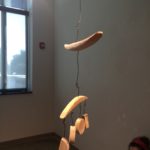Nash Milem ’18 at Artex Fine Art Services in Washington, D.C.
Sep 20, 2017My role at Artex Fine Art Services was to provide organizational structures toward current and past projects, as well as to give input on promotional materials of its services for clients and the public. It is not always a guarantee that an employee, and especially an undergrad intern, will find a position that matches their professional work area strengths, but this co-op allowed me to utilize skill sets that come naturally to me. The first is organization, and attention to detail along with it. I created a timeline of client exhibition schedules, including researching and inputting these dates into a database file. The second of these two projects was to familiarize myself with a shared company drive and determine how to best consolidate the contents so that the drive could be more efficient for employees to use. While most coworkers were taken aback by this task – “that drive is a mess!” I would often hear – I didn’t find it quite as daunting as most of the others. Through determining division of materials used by different departments, and talking to various people from these departments, I was able to determine a way to group files that was useful and well organized.
I didn’t dislike these two main projects but my favorite, and most unexpected, project was providing personal input on marketing materials and their graphic design. I think it’s uncommon for an intern to be able to provide feedback on materials for a company they are working for short-term, so I was pleased that my boss and supervisor of the company, John Jacobs, included me on these projects. I was able to sit in on face-to-face meetings and correspond via email with the design company founders. I provided suggestions as well as images of my choice to represent the company in their designs. My introduction to the shared drive gave me an advantage here – I had dove into the depths of the image files, disorganized as they were, and made note of which could be used for print. Sadly, I have not yet seen the printed product of the company brochure and holiday card yet, but I hope to in the future! My attention to detail as well as my interest in art not only made this easy for me, but ensured that I enjoyed it, as well.
Artex’s mission, as stated on their website is to “provide our clients with the highest standard of service to handle, pack, move and protect their artwork and antique collections.” While I may not have helped to physically handle and move artwork while working here, I believe that I helped to both provide the company with organized information and files to help facilitate that process. I also worked collaboratively to create visual products that convey this mission to clients that depend on these services. A long roster of customers, ranging from museums and institutions, to a single person with a collection they value, have relied on this company for the quality services they provide. Through what I accomplished during my time here, I was able to reinforce and project this mission statement to the public.
“Company.” Artex Fine Art Services, Artex, www.artexfas.com/about/company/. Accessed 19 Sept. 2017.
Photo Credit: Artex Fine Art Services
History and Justice: Nash Milem ’17 at the Holocaust Art Restitution Project in Washington, D.C.
Dec 12, 2016The beginning of my fall quarter began with me learning even more than I expected. Before starting work with the Holocaust Art Restitution Project, I imagined that I would learn some things, most of all about the process of art restitution. However, I didn’t expect just how much I would learn about the Holocaust, the history of the systematic looting of art and everything else from Nazi forces, and just how difficult it is for Holocaust victims and their descendants to find some semblance of legal justice even to this day.
Despite the fact that my field of interest is different than research or law, I decided that knowing the history involved with a piece of art or cultural object is always important. Many of us (myself included!) love museums for what they represent—a way to see a vast collection of history immobilized in a single place, whether it’s strictly art or a more comprehensive collection of things. For many people who could only ever see places like Egypt and France in their dreams, the artifacts and grand paintings are a very precious experience.
However, the Holocaust Art Restitution Project and I are both committed to remembering that museums are a part of the history attached to the objects within them, and that history can include both good and bad dimensions. This is why the Holocaust Art Restitution Project commits itself to documenting for the public the stolen, lost, and destroyed art during the Holocaust period continuing on into today. Museums, individuals, and governments have knowingly and unknowingly taken part in this spoliation over time, and it is important for people to keep this in mind.
With that knowledge in mind, I began to take interest in what measures were being taken to provide even a small amount of legal justice to the vast numbers of those who were robbed during the Holocaust. My research now has been focused on examining what policies and organizations that governments across different nations are taking in order to restitute artwork to those it was stolen from. How do the measures taken by various countries and non-governmental organizations align with declarations agreed upon regarding restitution measures? Are these actions enough, and is it right to put a timeline on legal compensation?
I hope that through my research I can answer some of these questions for myself and perhaps others, and that I can continue to keep in mind the role history plays in museums and the art world, as well as my involvement within it.







